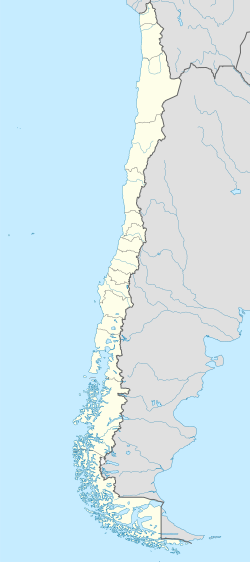Vallenar | |
|---|---|
 | |
| Coordinates: 28°34′15″S70°45′29″W / 28.57083°S 70.75806°W | |
| Country | |
| Region | |
| Province | Huasco |
| Founded | 1789 |
| Founded as | San Ambrosio de Ballenary |
| Founded by | Ambrose O'Higgins |
| Government | |
| • Type | Municipality |
| • Alcalde | Cristian Tapia Ramos |
| Area | |
• Total | 7,083.7 km2 (2,735.0 sq mi) |
| Elevation | 441 m (1,447 ft) |
| Population (2012 Census) [2] | |
• Total | 52,096 |
| • Density | 7.3543/km2 (19.048/sq mi) |
| • Urban | 48,040 |
| • Rural | 4,290 |
| Demonym | Vallenarino |
| Sex | |
| • Men | 23,284 |
| • Women | 24,765 |
| Time zone | UTC−4 (CLT) |
| • Summer (DST) | UTC−3 (CLST) |
| Area code | 56 + 51 |
| Website | Official website (in Spanish) |
Vallenar is a city and commune in Atacama Region, Chile. It is the capital of the Huasco Province and is located in the valley of the Huasco River. Vallenar has 52,000 inhabitants. Its main activities are farming and mining. It was founded as San Ambrosio de Ballenary by Ambrose O'Higgins in 1789, after his birthplace in Ballynary in County Sligo, Ireland. With its founding Vallenar displaced Santa Rosa, now Freirina, as the main settlement of the Huasco Valley. [3] [4]
Contents
In 1922 the city wa devastated by a large earthquake destroying much of its older architecture. [5]
Since the 1950s the city has been a service hub for iron mining in Chile with the city experiencing a significant economic upswing in the 1960s with the opening of the mine of El Algarrobo. Other iron mines near Los Colorados and Huantemé, but the wider Huasco basin hosts also mineral deposits of copper and gold.
The city lies next to the north-south Chile Route 5 highway which crosses through Huasco Bridge the river. The city lies downstream Santa Juana Dam built in the 1990s, and provides access to the inland commune of Alto del Carmen. Llanos de Challe National Park is located 60 km (37 mi) northwest of the city of Vallenar.



